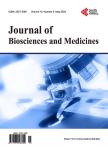Short Review of Ischemia- and Hypoxia-Protective Roles of “Big Potassium” (BK) Channels
Short Review of Ischemia- and Hypoxia-Protective Roles of “Big Potassium” (BK) Channels作者机构:Marian University College of Osteopathic Medicine Indianapolis USA Pikeville University College of Osteopathic Medicine Pikeville Kentucky USA Enalare Therapeutics Inc. Princeton USA NEMA Research Inc. Naples USA Neumentum Inc. Morristown USA University of Arizona College of Pharmacy Tucson USA Temple University School of Pharmacy Philadelphia USA
出 版 物:《Journal of Biosciences and Medicines》 (生物科学与医学(英文))
年 卷 期:2021年第9卷第6期
页 面:150-160页
学科分类:07[理学] 0701[理学-数学] 070101[理学-基础数学]
主 题:Big potassium Channels BKCa Ischemia Hypoxia Respiratory Stimulation ENA-001
摘 要:There is accumulating evidence that the subfamily of large-conductance potassium (“big, “BK) channels are involved in diverse, and perhaps coordinated, protective or counteractive responses to local or generalized ischemia and hypoxia. Although widely distributed, the physiological differences among BK channels which results from posttranslational modification (alternative splicing) and co-assembly with auxiliary modulatory subunits (β1-4 and γ1-4), bestows localized differences in subunit composition, distribution, 2nd-messenger coupling, and pharmacologic properties. Due to the ubiquitous nature of BK channels and the multiplicity of subtypes, they have many potential therapeutic applications in the maintenance of oxygen homeostasis, cerebro- and cardio-protection, and stimulation of respiration in response to drug-induced respiratory depression. BK channels may also offer other potentially broad and underrecognized promising targets for novel pharmaceutical development.



